Study of Bouguereau, Portrait of Lady Maxwell, Work in Progress Demo

Study of Bouguereau
Portrait of Lady Maxwell
Oil on Gessobord, 11x14, 2009
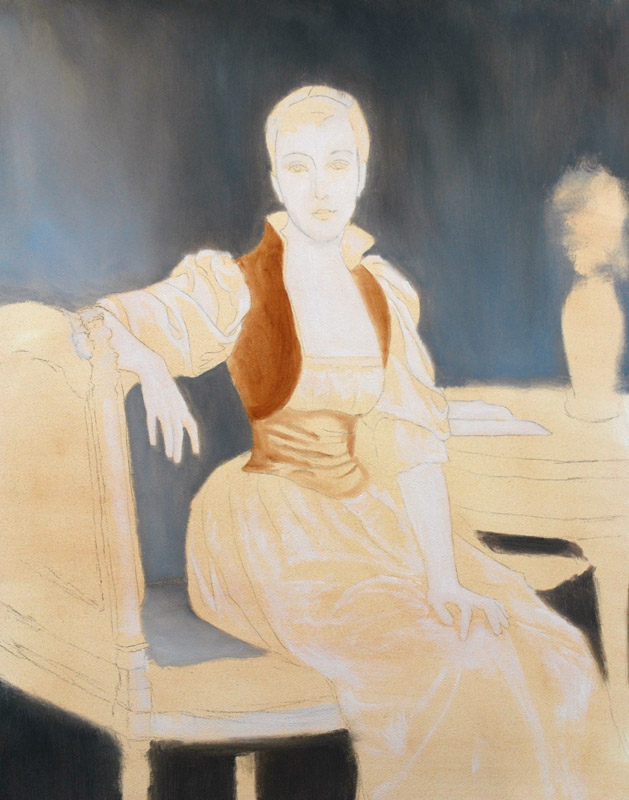 |
This will be a study of William Bouguereau's Portrait of Lady Maxwell. Studies are a time-honored method for artists to learn techniques from master painters. Many of the "Old Master" techniques taught between 1500-1900 were virtually lost as the modernist movement took hold, and these techniques were regarded as "kitsch" and outdated, especially as photography took over the job of the portraitist at the turn of the
century. So, the baby was thrown out with the bathwater, so to speak - these techniques were virtually erased from the art school textbooks. Bouguereau, possibly one of the finest portraitists ever, was not spared.
While my techniques will not be exactly the same as Bouguereau, this will at least give an example of the steps, and the time, required to complete a painting such as this. Each of these stages had to dry for several days, so this painting ultimately took nearly 2 months to complete. By showing the time-intense nature of this style of work, I hope to present an appreciation for the amount of skill and effort that the artists of the pre-1900 era spent in each of their paintings.
Before any work is started, I typically tone the panel with a burnt umber wash. This provides a mid-tone base on which to start the painting, and I can add both lighter and darker values on top of that. Because the toned panels need to dry for a while before any work can be started, I usually tone several panels at a time so I have plenty pre-toned when I need them.
This initial stage is basically a pre-underpainting underpainting stage. This is just a couple of hours work so far. I like to add white to all areas of the skin before shading, that way they are unified in color initially. Shading will come later.
When I paint, I think of the oil paint as one might view a stained glass window. A white underlayer provides an opaque base which will reflect light. Any translucent colors on top of that white base will pass through, hit the opaque white, and bounce back through the colored layers.
Oil on Gessobord, 11x14.
|
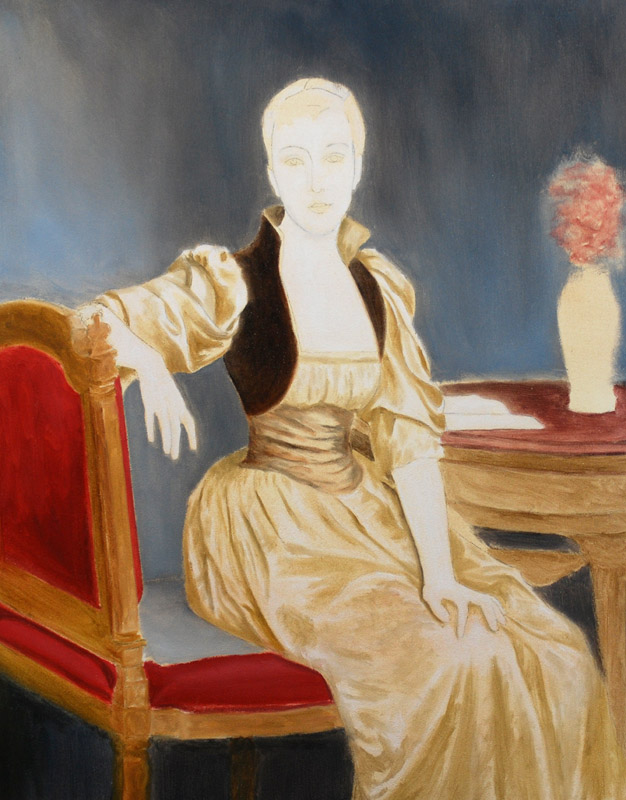 |
Here I'm just establishing base colors right now - all of this will have more layers on top. For the dress, I just used a dark ochre mix to define the folds. The midtones haven't been added yet.
|
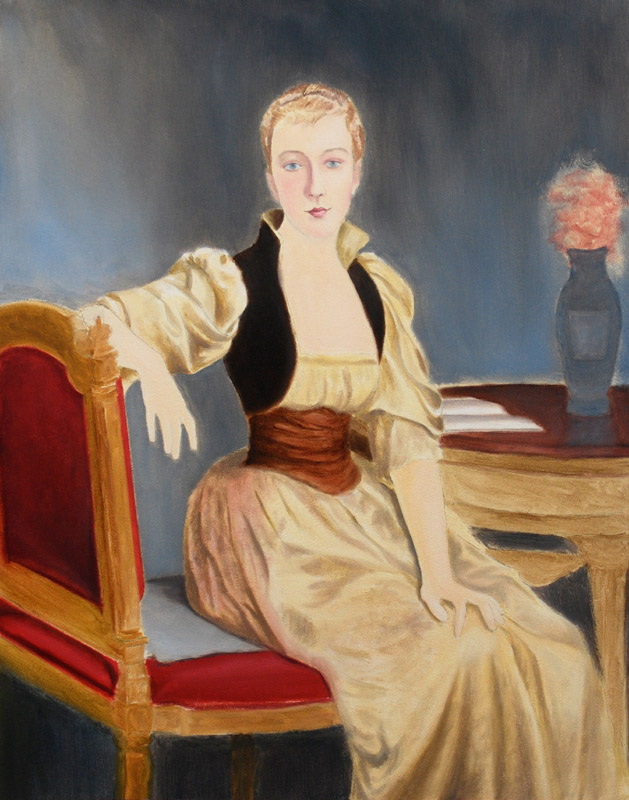 |
A little more on Ms. Maxwell here, mainly cleaning up surfaces to prep for details. I added a flesh tone to her skin, but no shading or highlights yet.
My skin palette consists of naples yellow + white + a small amount of alizarin crimson. By mixing these colors in varying proportions, most pale skin colors can be obtained.
My technique for creating smooth skin is "dab and scumble". I dab on the color paint with one brush, and then I take a dry brush, one that is usually pretty frayed already, and scumble the paint until the brush strokes are no longer visible. This technique must be done on a layer that is completely dry underneath, so that the scumbling won't pick up the previous layer's paint instead.
|
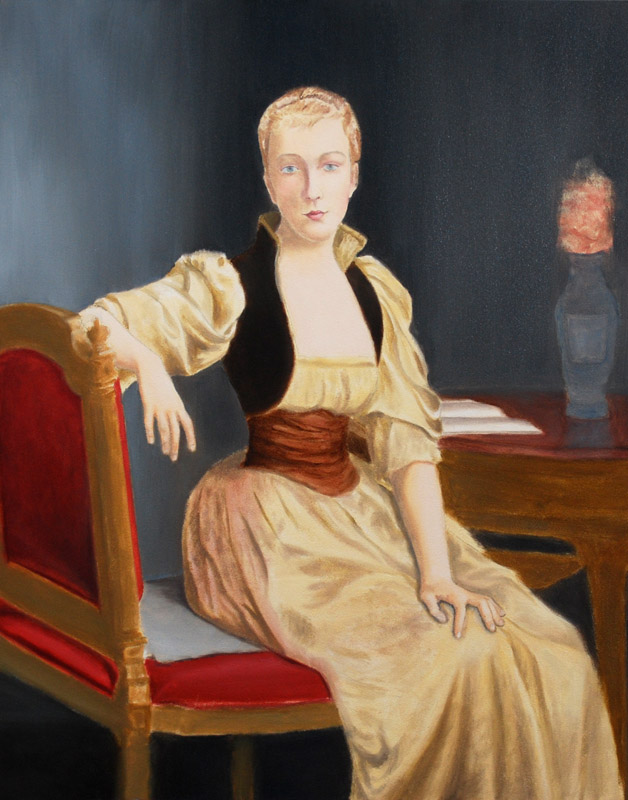 |
Here's more work on Lady Maxwell - most of what I'm doing now is probably not too obvious - I started shading on the skin a bit and put another layer of paint on the underlayer - basically refining the large blocks of color before I go in for the details. The skin shading and the face still needs a lot of work.
|
 |
Got a start in on the details, it's amazing what a little detail can do for a painting. :) Now, this is about 4x smaller than the original (the original is about 4 ft high) so I'm doing as much as I can with the constrained space.
|
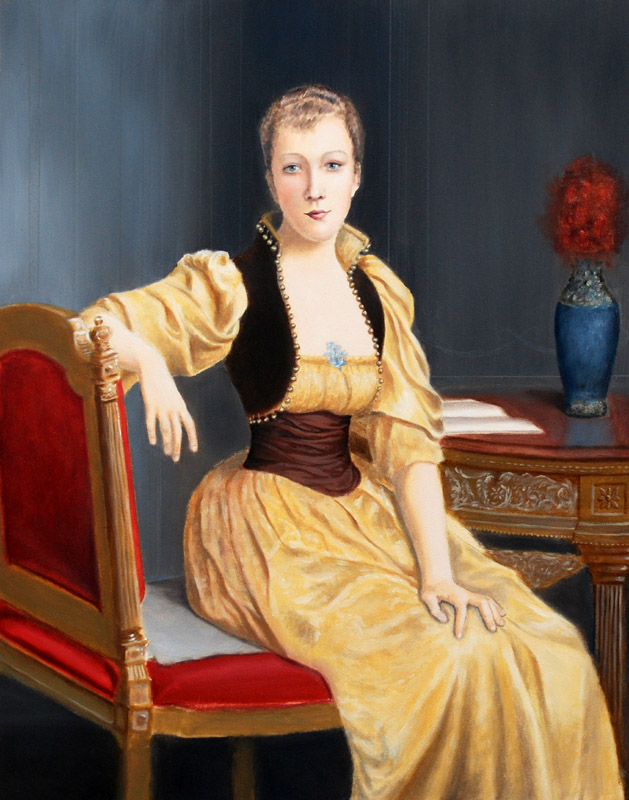 |
Here's an update, I've been working on this but the changes weren't really obvious so waited to post. I put another layer on the dress and worked on various details.
|
 | Here's the current version of this one.
|
|
|
